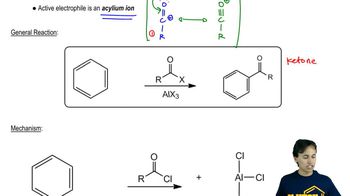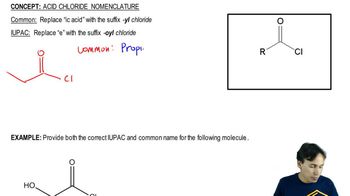Predict the products of the following electrophilic aromatic substitution reactions.
(b)

 Verified step by step guidance
Verified step by step guidance Verified video answer for a similar problem:
Verified video answer for a similar problem:



 4:29m
4:29mMaster Activity and Directing Effects with a bite sized video explanation from Johnny
Start learning